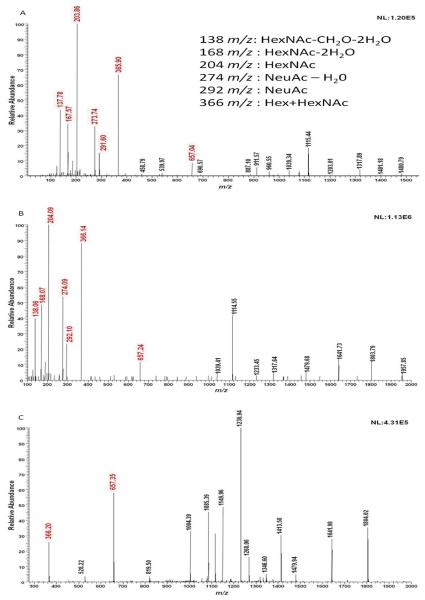Figure 1.
Distribution of oxonium ion fragments. Tandem MS of an ion with m/z 1039.565 from depleted blood serum using CID from the triple quadrupole mass spectrometer (A), and using HCD (B) and using CID from the orbitrap mass spectrometer (C). Ions shown in red are oxonium ion fragments. In the case of the triple quadrupole mass spectrometer experiment, fragmentation was attained at 40% normalized collision energy and 1.0 mtorr Argon collision gas pressure. Orbitrap fragmentation experiments, 35% normalized collision energy and 0.1 ms reaction time was used in the case of HCD, while 35% normalized collision energy, 15 ms activation time and 0.25 Q-value were used in the case of CID.

